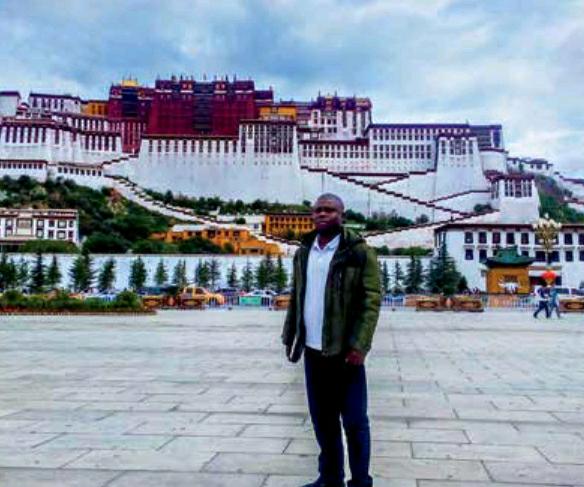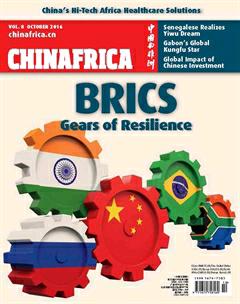An Ivorian in Tibet
By+Casimir+Kouadio
After a flight of four hours and 40 minutes, our airplane lands at Gonggar Airport, Lhasa, capital of the Tibet Autonomous Region. I am now standing at Chinas extreme south-western corner, almost 4,000 km away from Beijing. The terrain here is mountainous.
As soon as I step on the ground, I am greeted by a strange atmosphere as well as by very dry and strong winds, and struck by an intense heat. I have a hard time standing straight. My heart starts beating wildly, a fever-like feeling grips me, I feel out of breath, dizzy. Tibets altitude is taking its toll.
Our first stop is the Sheraton Hotel, one of the most prestigious hotels in the city. There, things do not look good either. It is difficult to eat, difficult to walk, difficult to shower, difficult to lie down and sleep.
Without transition, heat makes way for cold and vice versa. Temperatures fall from 28 degrees Celsius during the day to 14 degrees Celsius at night. I feel physically diminished throughout my stay.
After three days of this physical torture, we head for Nyingchi, the regions second city, located more than 500 km east of Lhasa, at 3,100 meters altitude. We can still feel the atmospheric pressure, but things are much better. I even allow myself time to go out for an evening walk.
A booming region
Covering an area of 1.23 million square km, Tibet is lifting itself out of underdevelopment. The regions two main cities, namely Lhasa and Nyingchi, are modern cities focusing on the tourism industry. In addition to temples, museums and other religious buildings, todays Tibet is a booming region which takes pride in its 2-km bridges, interchanges, and tunnels that pierce mountains for over 500 meters. Its also a region with beautiful modern villages such as Lulang, high up in the mountains, which attracts tourists from around the world.
In the area of agriculture and livestock, Tibet Autonomous Region Government has initiated projects using modern and proven techniques so that local populations can enjoy meat and other food products. All this was made possible despite the fact that the region is located on a plateau at 3,800 meters above sea level. Tibet features a university (Tibet University) and top-class technical and vocational schools, as well as highways and even airports in some cities.
The spirit of Buddhism
Superbly perched high on a 100-meter hill overlooking the city, the Potala Palace is beyond impressive. This magnificent burgundy and white palace immediately catches the eyes of any first time visitor and is the pride of the people of Lhasa. From far and near, the building does not show its age. And yet, it was built in the seventh century, during the reign of King Songtsen Gampo, the 33rd king of Tubo, which later became Tibet. An architectural masterpiece comprising 2,000 rooms, this palace has been part of the historical heritage under the national protection. It has now been turned into a museum run by Buddhist clerics. It receives an average of 5,000 visitors per day in summer, autumn and spring. In winter, this figure falls to 1,000. Waves of visitors flock to the site. In small groups, we visit the building following our guide.
Stuck in the city 5 km away is another Buddhist temple, with striking colors and architecture. This is the Jokhang Monastery. Around the building, the faithful come to pray night and day. According to authorities, Buddhism is still the main religion in Tibet. Over 92 percent of the Tibetan population are Buddhists, which was imported from India 12 centuries ago. Carved or crafted items representing the Buddha can often be seen in shops and other offices, where they receive the prayers of the faithful. In most shops in the city, one can find monk robes and other Buddhist regalia. However, Buddhism is not imposed on Tibet. Everyone is free to choose his or her religion.

